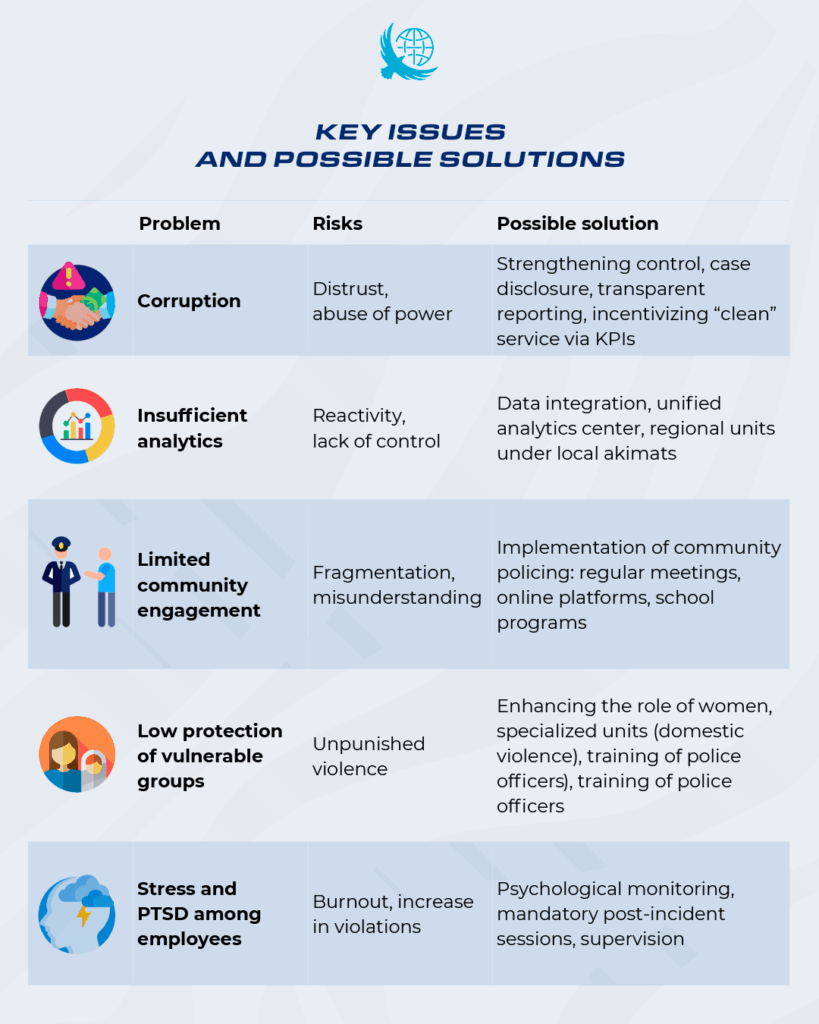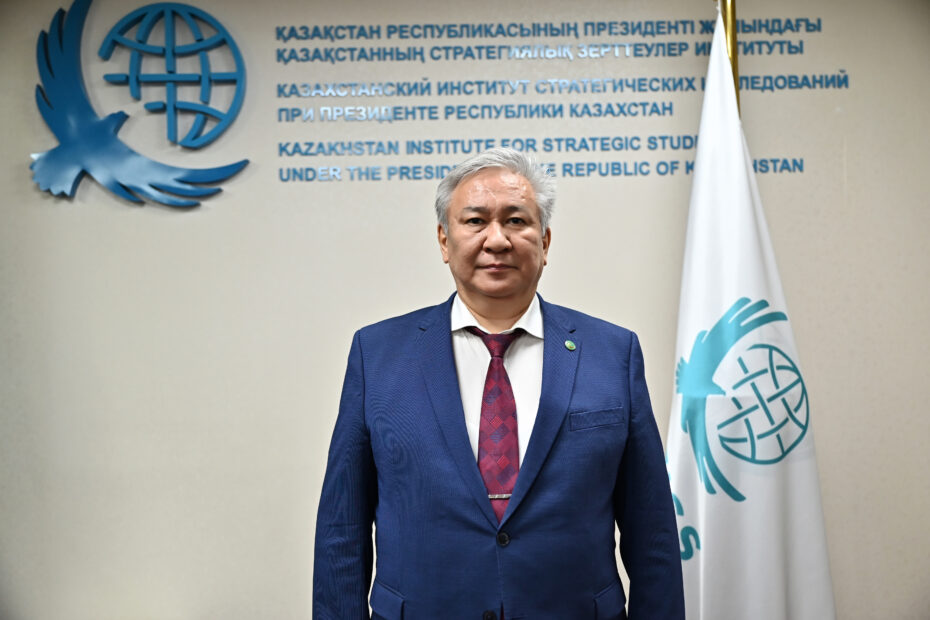Marat Zhumagulov, Chief Research Fellow of the Economic Policy Analysis Department
at the KazISS under the President of the Republic of Kazakhstan, Doctor of Law, Professor
“The Presidential Administration and the Security Council must, within one week, conduct an analysis of the activities of law enforcement agencies, openly identifying all shortcomings and proposing ways to address existing problems. This is a very important task that will be continued.”
— From a speech by President Kassym-Jomart Tokayev at the meeting of law enforcement agencies.
1. The Current Situation: Challenges and Distrust
Despite positive dynamics, systemic problems persist in the law enforcement system, directly affecting the public’s perception of the police. According to sociological surveys, about 62% of Kazakh citizens trust the police, while another 27% “mostly trust” them. However, almost one in ten respondents (9%) openly stated they do not trust the police at all.
The reasons for this distrust run deeper than isolated negative experiences. About a quarter of respondents associate it with corruption, and another 20% with a sense of formal and ineffective duty performance. People increasingly feel unprotected, encountering indifference or bureaucratic replies instead of real assistance. This reflects not only a technical issue but a psychological crisis of trust.
Particular concern is caused by police involvement in corrupt practices. According to the International Crime Victim Survey (ICVS), about 5% of Kazakh citizens have faced bribery demands from public officials — in half of these cases, by police officers. In 2024–2025, hundreds of violations were recorded, including bribery, abuse of power, and mistreatment. All of this undermines the sense of justice and erodes trust in the state as a whole.
2. Limited Analytical Resources
Efforts to reform the system are ongoing. In 2022, the Ministry of Internal Affairs established an Analytical Center to shift from formal reporting to proactive response and prevention. However, in practice, the analytical infrastructure remains fragmented, with no effective data integration between regions and agencies.
Since 2021, with UNODC support, seminars on community-oriented policing have been held, but these programs remain limited in scope and are still pilot initiatives.
3. Human Rights and Victim Protection
International organizations, including the U.S. Department of State and Human Rights Watch, report insufficient resources to address domestic and gender-based violence. Cases of mistreatment of detainees, including minors, are not uncommon. Delays in legislative initiatives and weak institutional responses undermine public confidence in the state’s ability to ensure human rights protection.
4. Growth Opportunities: Information and Human Resources
Positive changes are possible by developing key growth points:
- The Ministry of Internal Affairs is introducing a unified information and analytical system integrating emergency calls, offenses, and criminal case data.
- Analytical centers are being developed that could serve as a foundation for targeted crime response and prevention.
- Community-oriented policing concepts are receiving methodological support from UNODC and can draw on international experience (Canada, Scandinavia, the United Kingdom, as well as the Soviet-era local police practice).
Trust is built not through repression, but through personal interaction — participation in community life, direct dialogue, and transparent work.
5. Gender Balance and Vulnerable Groups
In Kazakhstan’s police force, women account for only 6–12%. This is particularly critical when responding to cases of domestic and sexual violence. Female police officers are more trusted by victims, especially in crisis situations. Expanding their involvement in patrol services and creating specialized units is a step toward greater fairness and effectiveness.
Protecting vulnerable groups — children, women, and migrants — requires not only special skills but also institutional reform.
6. Key Problems and Possible Solutions

7. Strategic Recommendations
To build a genuinely community-oriented policing model, a comprehensive approach is necessary:
a) Anti-Corruption Program: set concrete deadlines, ensure public oversight, implement transparent KPIs.
b) Analytics Development: define regional targets, introduce predictive mechanisms, and establish partnerships with local authorities.
c) Community Policing: launch large-scale pilot projects, formalize standards nationwide.
d) Gender Sensitivity: increase the number of women in the police force, and support services for women and children.
e) Social Support for Officers: introduce psychological assistance programs, prevent PTSD, implement work breaks and rotations.
f) Public Communication: reporting, dialogue, and awareness campaigns are all critical to building public trust.


